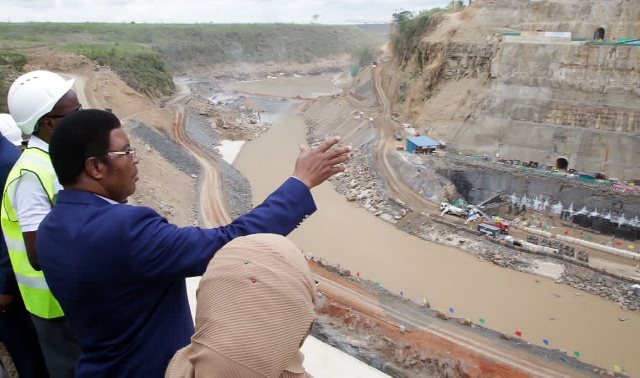Tanzania’s long road to boost its electricity portfolio gained pace Wednesday after prime minister Kassim Majaliwa launched the construction of the main dam at the Rufiji river.
The dam is part of Julius Nyerere Hydropower Station planned to have a capacity of 2,115 megawatts and produce 6,307 GWh per annum. The capacity of the dam’s reservoir is 34 billion cubic meters.
Also known as Rufiji Hydroelectric Power Station, the project has also involved diversion of Rufiji water to allow construction of the electric dam.
📹:Jionee Tukio la Uchepushaji Maji ya mto Rufiji kupita kwenye handaki lenye urefu wa mita 703 ili kupisha ujenzi wa tuta kuu la bwawa la kufua umeme la Julius Nyerere mkoani Pwani, pic.twitter.com/N2luVJOttF
— Haki Ngowi (@Hakingowi) November 18, 2020
Tanzania has been considering to establish the power station since the 1960s. When fully developed, it will be the largest power station in East Africa. The 134 metres (440 ft) arched, concrete dam is expected to create a reservoir lake, 100 kilometres (62 mi), in length, measuring 1,200 square kilometres (460 sq mi), with 34,000,000,000 cubic metres (1.2×1012 cu ft) of water.
in 2017, The government of Tanzania handed over the construction site to the consortium comprising Arab Contractors and El Sewedy, both of Egypt, who had been selected to build the power station.
In April 2019, the Tanzanian government made an upfront payment of US$309.645 million, representing approximately 15 percent total cost of construction. As of June 2020, the project is 40 percent complete.
Construction of the hydroelectric project is set for .2022. If successfully completed Julius Nyerere Hydropower Station would be Africa’s largest dam by installed capacity, over Egypt’s Aswan High Dam (2100 megawatts) Mozambique’s Cahora Bassa Dam (2075 megawatts) and Angola’s Lauca Dam (2069 megawatts).
At 2,115 megawatts, the dam’s contribution is more than the current peak demand of Tanzania. The country’s highest recorded power demand was 1051.27 megawatts in February 2017.
Installed capacity has been reported to be between 1366.60 megawatts and 1,602 megawatts. The Stiegler’s Gorge Hydropower Project will therefore significantly increase the installed capacity on-grid in Tanzania, supporting power for industrialisation and electrification.
But the project has also received criticism from environmental experts because the location of the gorge is in the middle of the Selous Game Reserve World Heritage Site. Conservationists are opposed to this project saying it threatens the endangered animal species in the area especially the black rhinoceros and elephants.
Also Read
Lesotho Highlands Water Project construction picks momentum
Tanzania’s modern bus terminal Mbezi Luis set for completion

